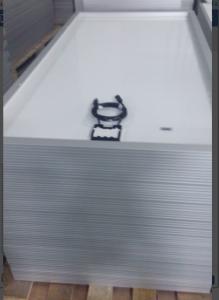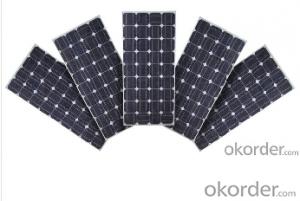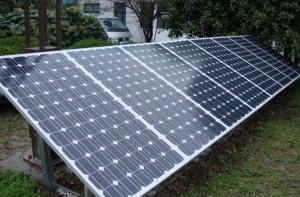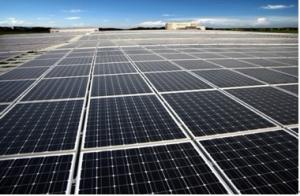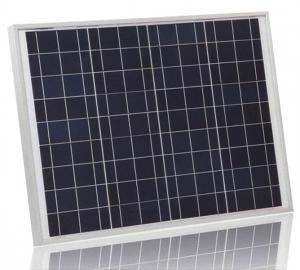Best Solar Panels for Van Conversion - LDK 60-Cell Mono Module 275W Output Warranty of 25 Years
- Loading Port:
- China Main Port
- Payment Terms:
- TT or LC
- Min Order Qty:
- -
- Supply Capability:
- -
OKorder Service Pledge
OKorder Financial Service
You Might Also Like
Dimensions(Laminate):1636 x 986 x 35 mm[64.41 x 38.82 x 1.38 in]
Solar Cells:60 (6x10) monocrystalline silicon -
156 x 156 mm [6 inch] solar cells

Why US?
· Industry leading module power output warranty of 25 years
· International quality and safety certifications
· Manufactured in ISO 9000 certified factories
· High-reliability with guaranteed 0/+5W peak power classification
· Excellent performance under low light environments
· Entire module certified to withstand high wind and snow loads
Warranty
· 10 years for product defects in materials and workmanship
· First 12 years for 90% of warranted minimum power
· Remaining 25 years for 80% of warranted minimum power
Vertically integrating business model enables us to
· Consistently build high quality and reliable PV products.
· Optimize our cost structure to deliver price-competitive products.
· Adopt cutting-edge product and production technologies.
· Develop the most advanced manufacturing methods.
· Minimize carbon emissions throughout our closed loop production process.
Certification
· IEC:IEC 61215, IEC 61730 (1&2), conformity to CE
· UL 1703 2002/03/15 Ed:3 Rev:2004/06/30
· ULC/ORD-C1703-01 Second Edition 2001/01/01
· UL and Canadian Standard for Safety Flat-Plate
· ISO 9001: 2008 Quality Management Systems
· CEC Listed: Modules are eligible for California Rebates
· PV Cycle: Voluntary module take back and recycling program
· MCS Certificate
After-sales Services Undertakings
1. During the equipment commissioning period, the company will send scheduler to commissioning to ensure debugging smoothly and a one-time test commissioning.
2. The company is responsible for professional users’ on-site operator training and technical exchange.
3. The long-term tracking service system: we practice lifelong quality of our product tracking service, and we also will take effective measures and solutions for the user of the technical issues and equipment problems.
4. Regularly listen to opinions and suggestions of users, to provide users with new trends in technological innovation, new product information and enhance mutual understanding.
5. Any problems, the company will provide solutions for users within 48 hours.
FAQ
Where can I buy your products?
You could find our products from dealers or contact our sales team directly. We will provide you with detailed services.
How to contact us?
Contact details can be found from website www.okorder.com to contact us. We look forward to providing you with professional services.
What is the application field of your products?
They can be used in the small photovoltaic (PV) grid power generation systems of family units as well as the commercial photovoltaic system such as BIPV, BAPV and etc.
What kinds of modules do your inventers support?
Our inventers support most of mainstream components and modules in the market. Should you require more details, please do not hesitate to contact our technical personnel.

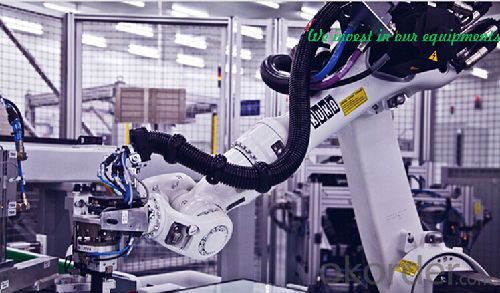



- Q: I know that there is a life expectancy for solar panels, and I suppose, the technology involved. Any information?
- All okorder /... PV warranties typically allow for 20 percent output degradation over the module’s 20- to 25-year warranty life. But measurements of many modules put into service in the 980s show that it’s unusual to see even half that much degradation. Many of those earliest modules still perform to their original specifications. It is safe to say that modules carrying warranties of 20 years or more have a high probability of working well 30 years from now
- Q: I have 2 solar panels one is 5 watts 2 volts .2 amps or -The other is 50 watts 2 volts 2.6 amps or-Can I ...and what is the best way to hook them togeather to increase my amps being put back to my battery ?? I would be hooking them up to a 7 amp 00 watt charge controllerThe panels are rated 2 volt but the specs say they will produce more whennot connected to charge controllerPlease advise and should I even bother with the smaller panel ?
- The answer is that the two panels should be put in parallel. The voltage out will drop to the voltage of the lower panel, but you should get most of the power, if the panels aren't too badly mismatched. I would try to get a multimeter and try to measure the actual current coming out of the panels in full sun. Sometimes the specifications on these smaller panels are very optimistic. If the whole setup is putting out less than 2 amps, I'd say wire the whole thing straight to the battery - little chance of boiling the electrolyte at those currents.
- Q: How do solar panels affect the property's community image?
- Solar panels can have a positive impact on a property's community image by showcasing a commitment to sustainability and renewable energy. They demonstrate that the property owner is environmentally conscious and proactive in reducing their carbon footprint. This can enhance the property's reputation, attract environmentally conscious residents or customers, and potentially inspire others in the community to consider adopting solar energy as well.
- Q: Why can not the solar panel load directly?
- Solar panels (also known as solar modules) are the core of solar power systems and the most important part of solar power systems.
- Q: This is the cenario. Your yearly energy use comes by mail and it states that the total amount of energy used your household is 7000kWh.Then you make the decision of switching to get solar panels. The question is what area should your solar panel be given that the average annual length of daylight is 2.0.
- It is not that simple. There are 3 main types of solar cells. Monocrystalline silicon is the most efficient and produces the smallest solar cells, and therefore the smallest panels. Poly-crystalline (or multi-crystalline) silicon produces the next most efficient type of cells and are a popular choice. Amorphous (or thin-film) silicon uses the least amount of silicon and also produces the least efficient solar cells. This means thin film system take up more area than the other two; an important factor to consider in relation to possible future upgrades; i.e. if you'll have enough space left to do so. The North (in the Southern hemisphere) or South (in the Northern hemisphere) facing roof collects the most energy. So this biases the roof area required. Your energy usage can be changed. Hot water (a major energy user) could be better using direct solar heating with peak demand boosting, either from mains or solar. There are other possibilities, either to reduce demand or to provide energy from other sources. Not all sunshine hours are equal. Hours around midday are far more productive than hours later in the day. This must be factored in.
- Q: Can solar panels be installed on swimming pools?
- Yes, solar panels can be installed on swimming pools. Solar panels can help to power pool pumps, heaters, and other equipment, reducing energy costs and making pools more energy-efficient.
- Q: Can solar panels be used for powering outdoor lighting?
- Yes, solar panels can be used for powering outdoor lighting. Solar panels capture sunlight and convert it into electricity, which can then be stored in batteries. This stored energy can be used to power outdoor lighting fixtures, making them independent of the grid and environmentally friendly.
- Q: I need to prepare solar panels for using in home needs electricity purpose. Can anyone could help me to know much more about it.
- Unfortunately, okorder / You could make your own solar water heater, and poasibly save money that way. You could pay a professional to install solar panels for you, and it might actually save money in the long run, depending on where you live. But the up-front investment is usually on the order of $0,000.
- Q: Can solar panels be installed in urban areas?
- Yes, solar panels can be installed in urban areas. In fact, urban areas provide ample opportunities for solar panel installations on rooftops, parking lots, and other available spaces. With advancements in technology and design, urban solar installations have become more efficient and aesthetically pleasing, contributing to the overall sustainability and energy independence of cities.
- Q: I am intrested in buying solar panels to save a buck and even maek some money off of it but I was wondering what kind? How Much? How Many? Are they easy to install? Whats the best brand? I want alot of information on this if anyone can give me some help on it in a user friendly way it would be appreciated!
- You're unlikely to 'save a buck' much less 'make any money off of it' at the present state of the art. The panels and equipment will cost more than you'll save in the next ten years. That might change with energy prices, but not enough any time soon.
Send your message to us
Best Solar Panels for Van Conversion - LDK 60-Cell Mono Module 275W Output Warranty of 25 Years
- Loading Port:
- China Main Port
- Payment Terms:
- TT or LC
- Min Order Qty:
- -
- Supply Capability:
- -
OKorder Service Pledge
OKorder Financial Service
Similar products
Hot products
Hot Searches
Related keywords












